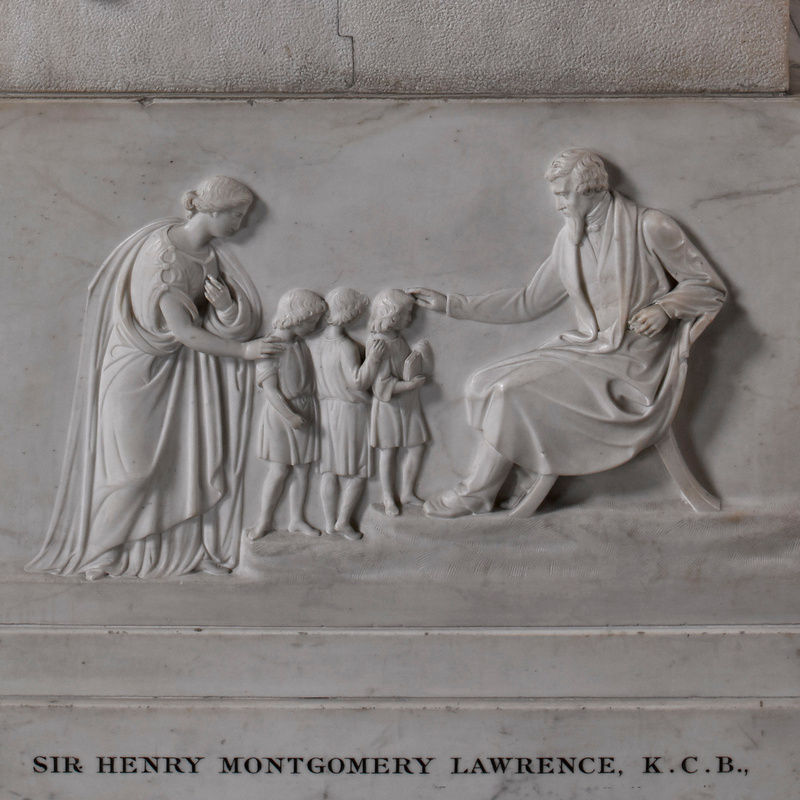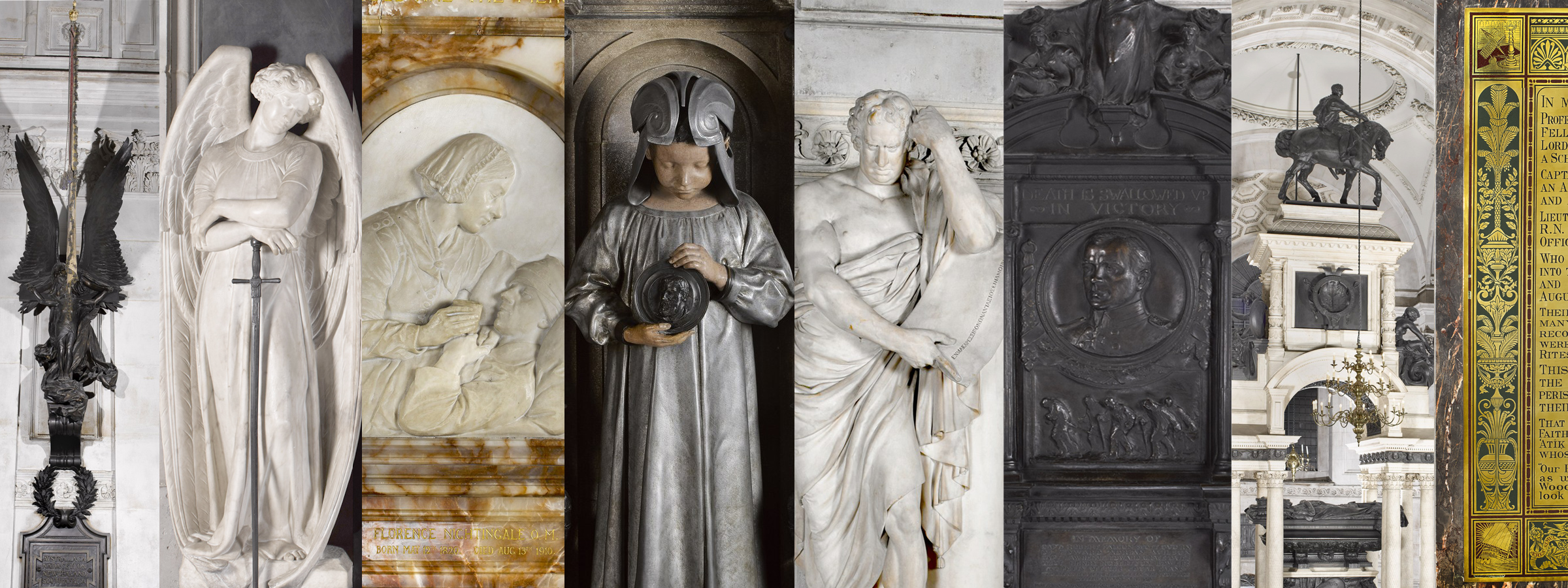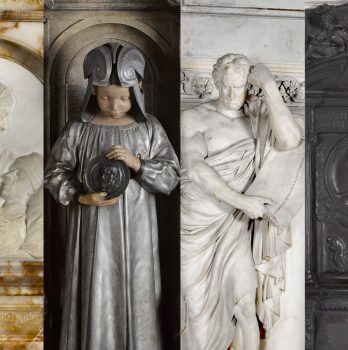‘Sanawar: A Legacy’ by The Lawrence School, Sanawar in Response to the Monument to Sir Henry Montgomery Lawrence by John Lough, 1862


‘Sanawar: A Legacy’ – Transcript
Headmaster, Himmat Singh Dhillion:
Sir Henry Lawrence did his duty, and more. He founded the Lawrence schools; the very first one was at Sanawar, then Lovedale, Ghora Gali and Mount Abu.
Charity , altruism, benefits: in fact, the very duty of care was the motivation for the foundation of these worthy institutions. Today, Sanawar has a 175-year-old legacy which has enabled it to become a proud Indian school that not only serves the children of the new India but the world at large.
I hand you over to our wonderful students. They will lead the way.
Student 1:
I wonder what makes a chapel a building of Interest?
Student 2:
The oldest existing building, built in 1853, it is the spiritual centre of the school: the chapel. The school assemblies take place here.
The porch was built in the memory of our founder by Colonel Herbert Edward in 1858.
Student 3:
What is the significance of this war memorial?
Student 4:
Located next to the chapel, it was built in the proud memory of the old Sanawarians who fell in the Great War. The memorial is in the form of a Celtic cross and is about 20 feet high.
It is a testament of the long-standing history of the old Sanawarians who continue to fight for the nation.
Student 5:
What magnificent architecture! I wonder what the story behind this building is.
Student 6:
The foundation stone of Birdwood School, the centre of academic excellence, was founded by the Right Reverend, the Bishop of Lahore H. B. Durant on August 25th 1927; and the Birdwood School building was founded by his Excellency Field Marshal Sir W. R. Birdwood Bart., commander-in-chief India on September 22 1929.
It also houses the Barne Hall, the school auditorium which was named after the then principle of the school, Sir George Barne. All School functions and traditional programmes take place here.
Student 7:
As buildings go, here’s another one that looks amazing! Any thoughts about this?
Student 8:
This is the school’s library and Museum, formerly the girls’ dining hall, it is named after Miss Ada Parker, the headmistress for the girls from 1890 to 1923.
This building consolidates history with memorabilia collected over the years. This institution takes pride in preserving the traditions and the ethos of the founder’s vision.
Student 9:
What a magnificent field this is, being guarded by a soldier! I wonder why?
Student 10:
Late in 1927, it was the playground for girls, where all manners of games were to be played, reconstructed in 2019, and it is the main field for all sporting activities for the Girls Department.
Standing at a continuous vigil in the corner of the Peacestead is a life-size statue of 2nd Lieutenant Arun Khetarpal, Param Vir Pakra, who laid down his life for the defense of the nation.

About The Lawrence School, Sanawar, India
The Lawrence School, Sanawar, was founded in 1847 by Sir Henry Montgomery Lawrence (1806–1857) with his wife Lady Honoria Lawrence (1808–1854) as a boarding school for orphaned children from military families, in the healthy climate of the Kasauli Hills in Himachal Pradesh, India, in the foothills of the Himalayas. It is one of three surviving schools of the four that Lawrence founded in India. It is considered the oldest co-educational boarding school in the world.
The Lawrence School was awarded the King’s Colours in 1853, a symbol of the school’s commitment to military training. (Many students from the school fought and died in the First World War.) Unusually, upon Sir Henry’s death in 1857, control of the school passed to the British Crown. The school’s centenary year coincided with Indian Independence in 1947 and control passed to the Government of India, under the Ministry of Defence, and shortly thereafter to the Education Ministry, before the school became autonomous in 1953.
Today, the school is a thriving community of some 700 students. The school lives by its motto ‘Never Give In’, especially evident in 2013, when students became the first school team to climb Everest. The school is a member of Round Square, an international network of schools sharing the ethos of educator Kurt Hahn (1886–1974). The current headmaster is Himmat Singh Dhillion, who introduces the school and his students in the video above.
Visit The Lawrence School, Sanawar’s website and find them on Facebook, Instagram, Twitter and YouTube.
About the Monument
The monument to Brigadier-General Sir Henry Montgomery Lawrence (1806–1857) was created by John Graham Lough (1798–1876) and installed in the south transept of St Paul’s Cathedral in 1862. Lawrence, who had died from wounds during the Siege of Lucknow, was represented in Lough’s monument as a free-standing figure whose military role is not immediately apparent and whose military title is not given, though the inscription reads, ‘Died in the defense of Lucknow’. The other strands of his life as an educator and Christian are reflected in the relief panel, which represents a tender tableau of the seated Sir Henry talking to three young children, ushered by a woman in Roman matronly dress, a probable allusion to Lady Honoria Lawrence (1808–1854), who was a key partner in the foundation of the schools they founded and ran for military orphans.
The monument in St Paul’s contrasts with the memorial in the chapel at The Lawrence School, Sanawar, which can be seen in the video: that monument is dedicated to both Sir Henry and Lady Honoria by name, as well as two of their children. The Sanawar monument includes a bust portrait of Sir Henry in his younger days, before he sported the recognisable beard that features in both representations on Lough’s monument at St Paul’s.


